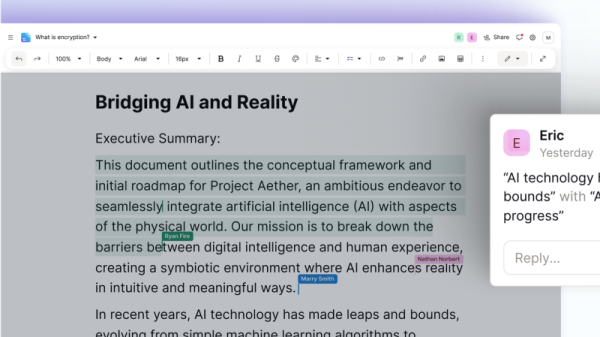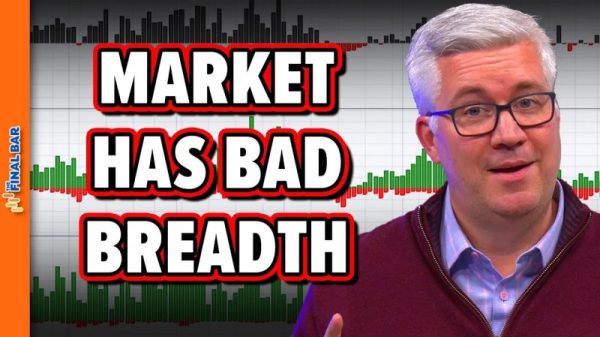One of the tools I use most frequently in my work is a spreadsheet compiled by the Pew Research Center tracking the composition of the electorate in the 2016-to-2020 federal election cycles. The document is an essential, straightforward Rosetta stone for understanding who voted in each of those years and for whom they voted. It’s just numbers that tell a story if you look at them in the right way. It’s the Matrix of American politics.
Given my enthusiasm for this document, you will understand that I was thrilled to learn last week that Pew was adding data from 2022.
The way Pew compiles its data is by conducting an expansive poll of U.S. adults and then validating their actual participation in each election. This allows Pew to present a more accurate picture of what happened in each contest.
The Washington Post’s Scott Clement walked through the core findings in Pew’s new analysis. In short, the results were driven by partisan turnout rather than persuasion, with Republicans outperforming on that metric. It’s tricky to extrapolate from this, though: Does it mean that Democrats will have a turnout problem in 2024? Or is it a good sign for Democrats that they fared decently in 2022 despite being beaten on turnout?
Let’s set this aside, though, in favor of considering a subset of Pew’s analysis: the changes in turnout and support at the demographic level over the past four cycles.
To do so, I compiled a number of graphs (from Pew’s new Matrix spreadsheet) comparing turnout percentages with vote margins. On each chart, a demographic group’s change is shown as a line moving from a dot (usually the 2016 election) to an arrow (2022). If the line moves down, that indicates that the demographic group makes up less of the electorate than it used to. If it moves up, it became a larger part of the electorate.
Similarly, if a line moves left, the vote margin among voters in that group moved more favorably to Democrats over time. If it moves right, the voters shifted to a more Republican-friendly margin.
Here, for example, are the results by gender. Each line shows four points: 2016 (the dot), 2018 and 2020 (the kinks in the line) and 2022 (the arrow). For nonpresidential years, the margins (below, ranging from a 20-point Democratic to a 20-point Republican advantage) refer to House races.
You can see a few things here. First, women have been a declining part of the electorate since 2016 (the line is moving down) and the margin among female voters has moved more in favor of Republicans (to the right) — at least after that shift to the left in 2018. Men have made up an increasing part of the electorate and have also shifted to the right, again with the 2018 exception.
If we look at the result by age, it’s a different pattern. Voters under 30 made up less of the electorate in 2022 but also voted more heavily Democratic. Voters age 65 and up made up more of the electorate, not surprising given that it was a lower-turnout election than 2020.
The Pew data also show that Asian and Hispanic voters shifted to the right in 2022 after also shifting to the right between 2018 and 2022. (Data for Asian Americans in 2016 isn’t available, so that arrow starts at 2018, indicated with an open circle.) Notice that White Americans make up a disproportionate part of the electorate, far outpacing their density in the population.
They are also the only racial group that votes more heavily Republican.
In each case, there’s an additional divide between men and women. Across racial groups, women consistently vote more heavily Democratic. White women voted more heavily Democratic in 2018 but have not since.
Those shifts among Hispanics, of course, are a central source of heartburn for Democratic candidates and party officials. The shifts to the right in 2022 were not as dramatic as those in 2020, but they were not a reversal of those 2018-to-2020 shifts, either.
Except, that is, among younger Hispanics. Hispanic Americans under the age of 50 moved left between 2020 and 2022, as did White Americans under 50. (In 2020, White Americans under 50 were evenly split in the presidential race.) Those younger White people, though, made up much less of the electorate.
In general, members of each political party voted heavily for their party’s candidates. Independents continued their rightward drift, but independents are still voting more heavily Democratic than they did in 2016.
Among Republicans, there has been an interesting shift. Since 2016, conservative Republicans have moved to the right while moderate Republicans have moved left (with a rightward jog between 2020 and 2022). But moderate Republicans also make up much less of the electorate than conservatives — and a smaller percentage of voters than they used to. The Republican portion of the electorate, in other words, is getting more conservative.
There are two other key divides in the electorate worth exploring.
The first is a partisan split between urban and rural voters. Pew’s data shows that each of those groups makes up a relatively small part of the electorate, with suburban voters making up far more of the voting pool. Those suburban voters shifted right for the first time since 2016 — probably in part a function of Donald Trump not being on the ballot. (Directly, anyway.)
The much-watched subgroup of suburban women didn’t change much from 2020 to 2022, though the margin at which they prefer Democrats has declined. Among suburban men, the margin shifted back into Republican territory in 2022.
One of the biggest political shifts was among rural women, who moved 13 points toward Republicans in their vote margin from 2020 to 2022.
That suburban-women demographic is also often conflated with married women, which is oversimplified. There is a big gap in vote margins between married and unmarried Americans, as shown below. But this — like race and education — overlaps with age.
Education, of course, is the second of the two divides worth looking at more closely. In 2022, voters with college degrees made up a larger part of the electorate than they had in 2020. But, to the Democrats’ detriment, their margins shifted right.
Here again, we see a divide by gender. Women without a college degree have both moved to the right since 2016 and made up much less of the electorate. You’ll recall that the percentage of women in the electorate fell from 2020 to 2022. That drop was entirely among women without degrees.
It was also among younger women. Women 50 and older made up a larger percentage of the electorate than they did in 2020.
If we compare education and race, we see a result that looks a lot like the overlap of race and age. This isn’t surprising; older Americans are much less likely to have a college degree than younger Americans.
Finally, it’s worth noting one remarkable shift in the Pew data: income. In 2016, those making under $50,000 a year made up almost three times as many voters as those making $100,000 or more. Now, the wealthier group makes up more of the electorate. It has also moved sharply to the right since 2020.
Remember that all of this is conflated with turnout shifts. It is not the case necessarily that these groups are turning out more heavily forever or have newly embraced Republican politics. It may be the case that more-Republican voters from those groups turned out more heavily in a Republican-favorable election cycle.
But that’s the beauty of the Pew data! There’s an enormous amount to parse and examine and mull over. You just need to follow the white rabbit.
One of the tools I use most frequently in my work is a spreadsheet compiled by the Pew Research Center tracking the composition of the electorate in the 2016-to-2020 federal election cycles. The document is an essential, straightforward Rosetta stone for understanding who voted in each of those years and for whom they voted. It’s just numbers that tell a story if you look at them in the right way. It’s the Matrix of American politics.
Given my enthusiasm for this document, you will understand that I was thrilled to learn last week that Pew was adding data from 2022.
The way Pew compiles its data is by conducting an expansive poll of U.S. adults and then validating their actual participation in each election. This allows Pew to present a more accurate picture of what happened in each contest.
The Washington Post’s Scott Clement walked through the core findings in Pew’s new analysis. In short, the results were driven by partisan turnout rather than persuasion, with Republicans outperforming on that metric. It’s tricky to extrapolate from this, though: Does it mean that Democrats will have a turnout problem in 2024? Or is it a good sign for Democrats that they fared decently in 2022 despite being beaten on turnout?
Let’s set this aside, though, in favor of considering a subset of Pew’s analysis: the changes in turnout and support at the demographic level over the past four cycles.
To do so, I compiled a number of graphs (from Pew’s new Matrix spreadsheet) comparing turnout percentages with vote margins. On each chart, a demographic group’s change is shown as a line moving from a dot (usually the 2016 election) to an arrow (2022). If the line moves down, that indicates that the demographic group makes up less of the electorate than it used to. If it moves up, it became a larger part of the electorate.
Similarly, if a line moves left, the vote margin among voters in that group moved more favorably to Democrats over time. If it moves right, the voters shifted to a more Republican-friendly margin.
Here, for example, are the results by gender. Each line shows four points: 2016 (the dot), 2018 and 2020 (the kinks in the line) and 2022 (the arrow). For nonpresidential years, the margins (below, ranging from a 20-point Democratic to a 20-point Republican advantage) refer to House races.
You can see a few things here. First, women have been a declining part of the electorate since 2016 (the line is moving down) and the margin among female voters has moved more in favor of Republicans (to the right) — at least after that shift to the left in 2018. Men have made up an increasing part of the electorate and have also shifted to the right, again with the 2018 exception.
If we look at the result by age, it’s a different pattern. Voters under 30 made up less of the electorate in 2022 but also voted more heavily Democratic. Voters age 65 and up made up more of the electorate, not surprising given that it was a lower-turnout election than 2020.
The Pew data also show that Asian and Hispanic voters shifted to the right in 2022 after also shifting to the right between 2018 and 2022. (Data for Asian Americans in 2016 isn’t available, so that arrow starts at 2018, indicated with an open circle.) Notice that White Americans make up a disproportionate part of the electorate, far outpacing their density in the population.
They are also the only racial group that votes more heavily Republican.
In each case, there’s an additional divide between men and women. Across racial groups, women consistently vote more heavily Democratic. White women voted more heavily Democratic in 2018 but have not since.
Those shifts among Hispanics, of course, are a central source of heartburn for Democratic candidates and party officials. The shifts to the right in 2022 were not as dramatic as those in 2020, but they were not a reversal of those 2018-to-2020 shifts, either.
Except, that is, among younger Hispanics. Hispanic Americans under the age of 50 moved left between 2020 and 2022, as did White Americans under 50. (In 2020, White Americans under 50 were evenly split in the presidential race.) Those younger White people, though, made up much less of the electorate.
In general, members of each political party voted heavily for their party’s candidates. Independents continued their rightward drift, but independents are still voting more heavily Democratic than they did in 2016.
Among Republicans, there has been an interesting shift. Since 2016, conservative Republicans have moved to the right while moderate Republicans have moved left (with a rightward jog between 2020 and 2022). But moderate Republicans also make up much less of the electorate than conservatives — and a smaller percentage of voters than they used to. The Republican portion of the electorate, in other words, is getting more conservative.
There are two other key divides in the electorate worth exploring.
The first is a partisan split between urban and rural voters. Pew’s data shows that each of those groups makes up a relatively small part of the electorate, with suburban voters making up far more of the voting pool. Those suburban voters shifted right for the first time since 2016 — probably in part a function of Donald Trump not being on the ballot. (Directly, anyway.)
The much-watched subgroup of suburban women didn’t change much from 2020 to 2022, though the margin at which they prefer Democrats has declined. Among suburban men, the margin shifted back into Republican territory in 2022.
One of the biggest political shifts was among rural women, who moved 13 points toward Republicans in their vote margin from 2020 to 2022.
That suburban-women demographic is also often conflated with married women, which is oversimplified. There is a big gap in vote margins between married and unmarried Americans, as shown below. But this — like race and education — overlaps with age.
Education, of course, is the second of the two divides worth looking at more closely. In 2022, voters with college degrees made up a larger part of the electorate than they had in 2020. But, to the Democrats’ detriment, their margins shifted right.
Here again, we see a divide by gender. Women without a college degree have both moved to the right since 2016 and made up much less of the electorate. You’ll recall that the percentage of women in the electorate fell from 2020 to 2022. That drop was entirely among women without degrees.
It was also among younger women. Women 50 and older made up a larger percentage of the electorate than they did in 2020.
If we compare education and race, we see a result that looks a lot like the overlap of race and age. This isn’t surprising; older Americans are much less likely to have a college degree than younger Americans.
Finally, it’s worth noting one remarkable shift in the Pew data: income. In 2016, those making under $50,000 a year made up almost three times as many voters as those making $100,000 or more. Now, the wealthier group makes up more of the electorate. It has also moved sharply to the right since 2020.
Remember that all of this is conflated with turnout shifts. It is not the case necessarily that these groups are turning out more heavily forever or have newly embraced Republican politics. It may be the case that more-Republican voters from those groups turned out more heavily in a Republican-favorable election cycle.
But that’s the beauty of the Pew data! There’s an enormous amount to parse and examine and mull over. You just need to follow the white rabbit.























